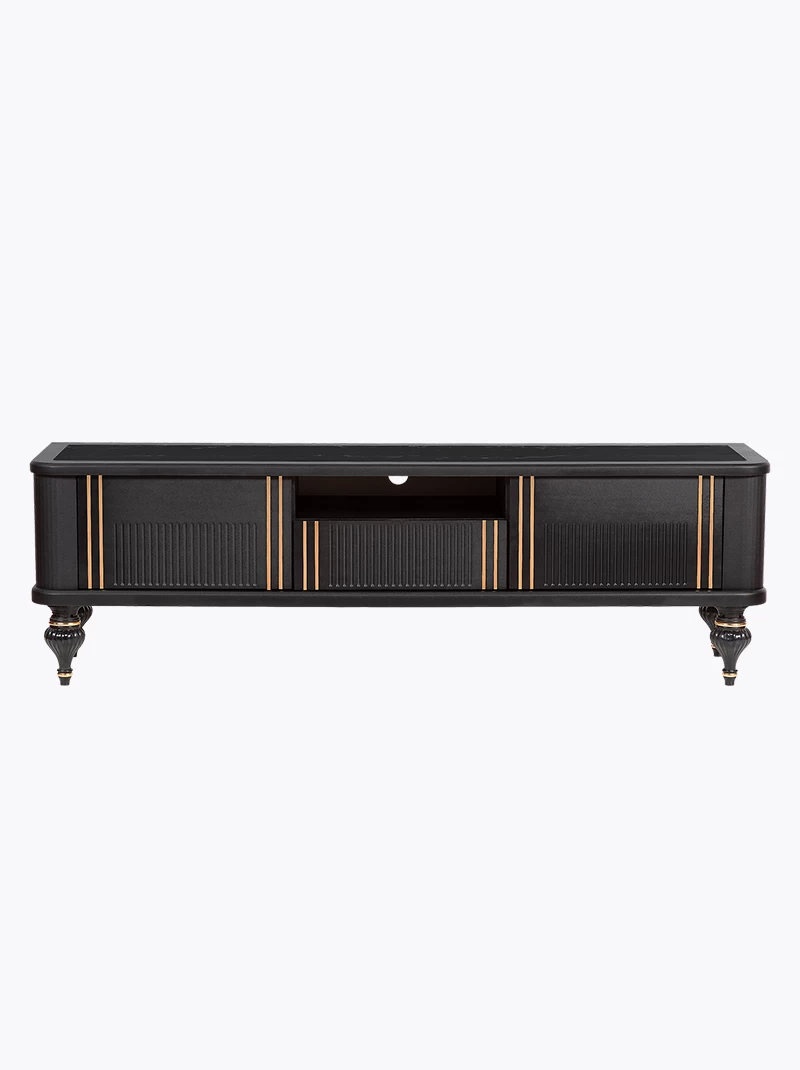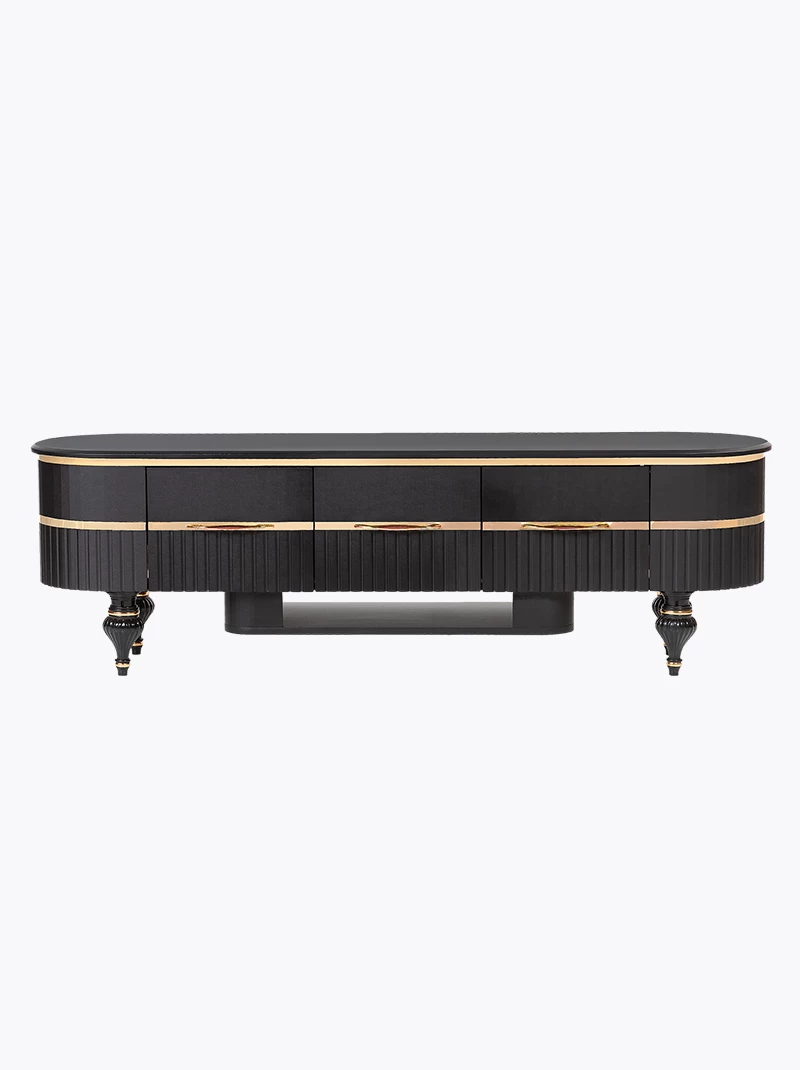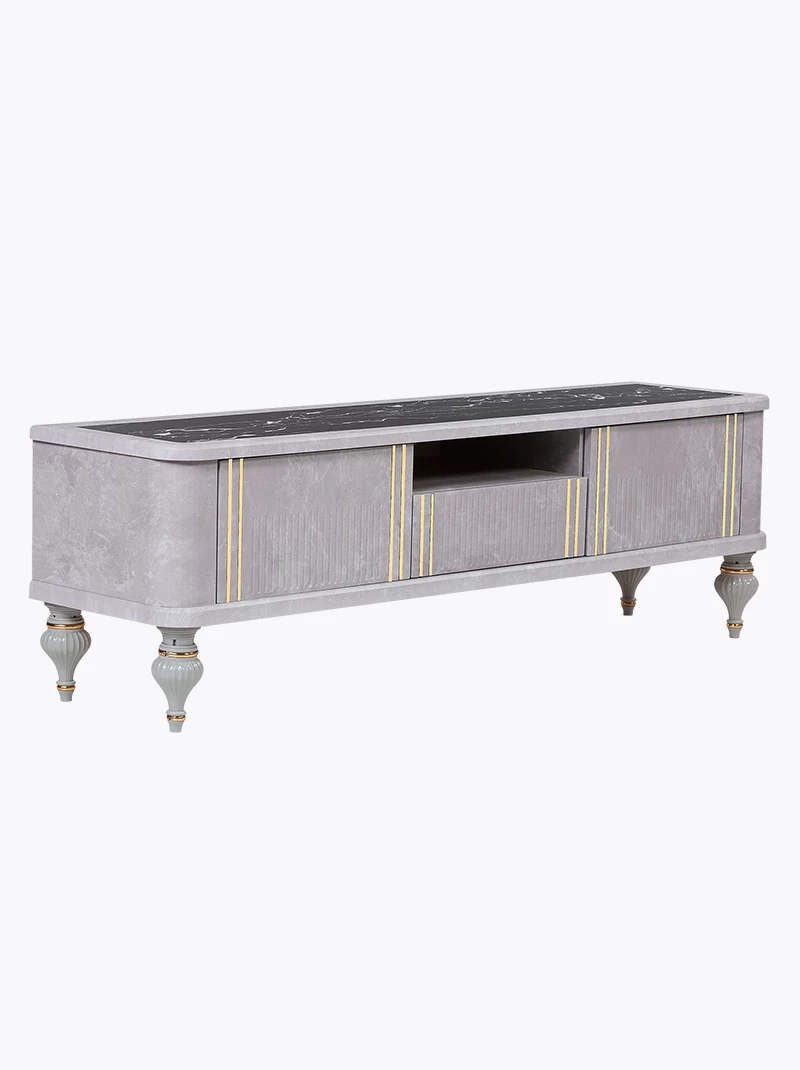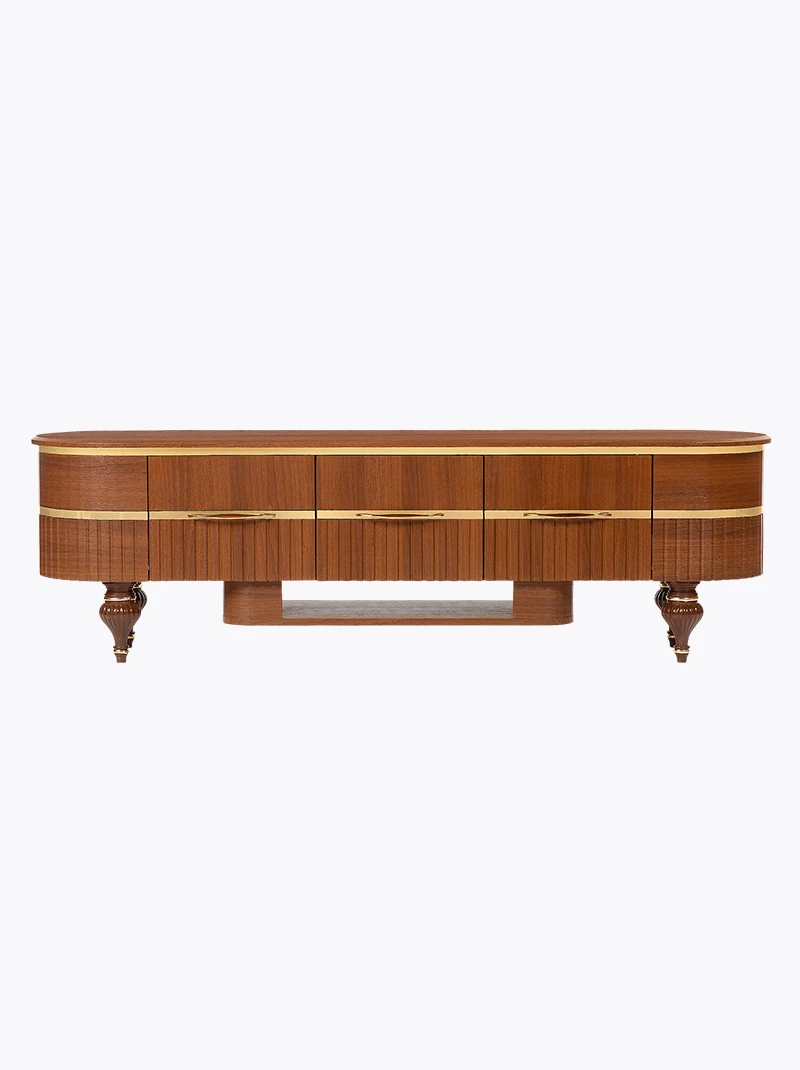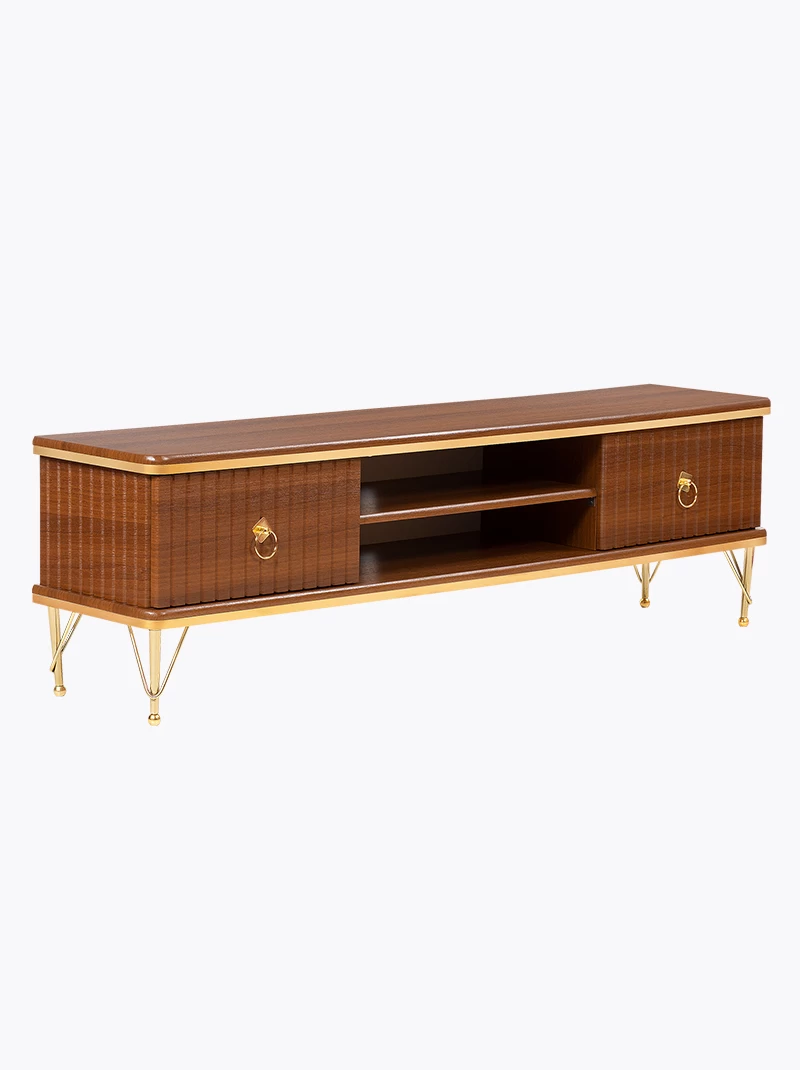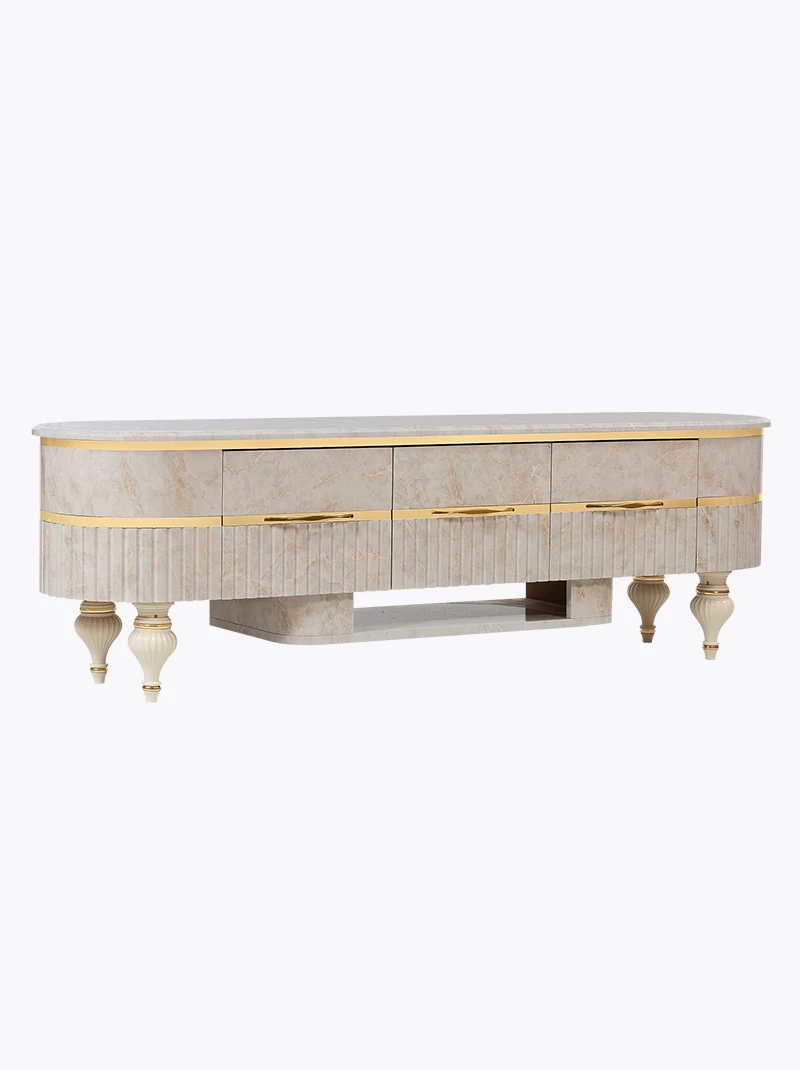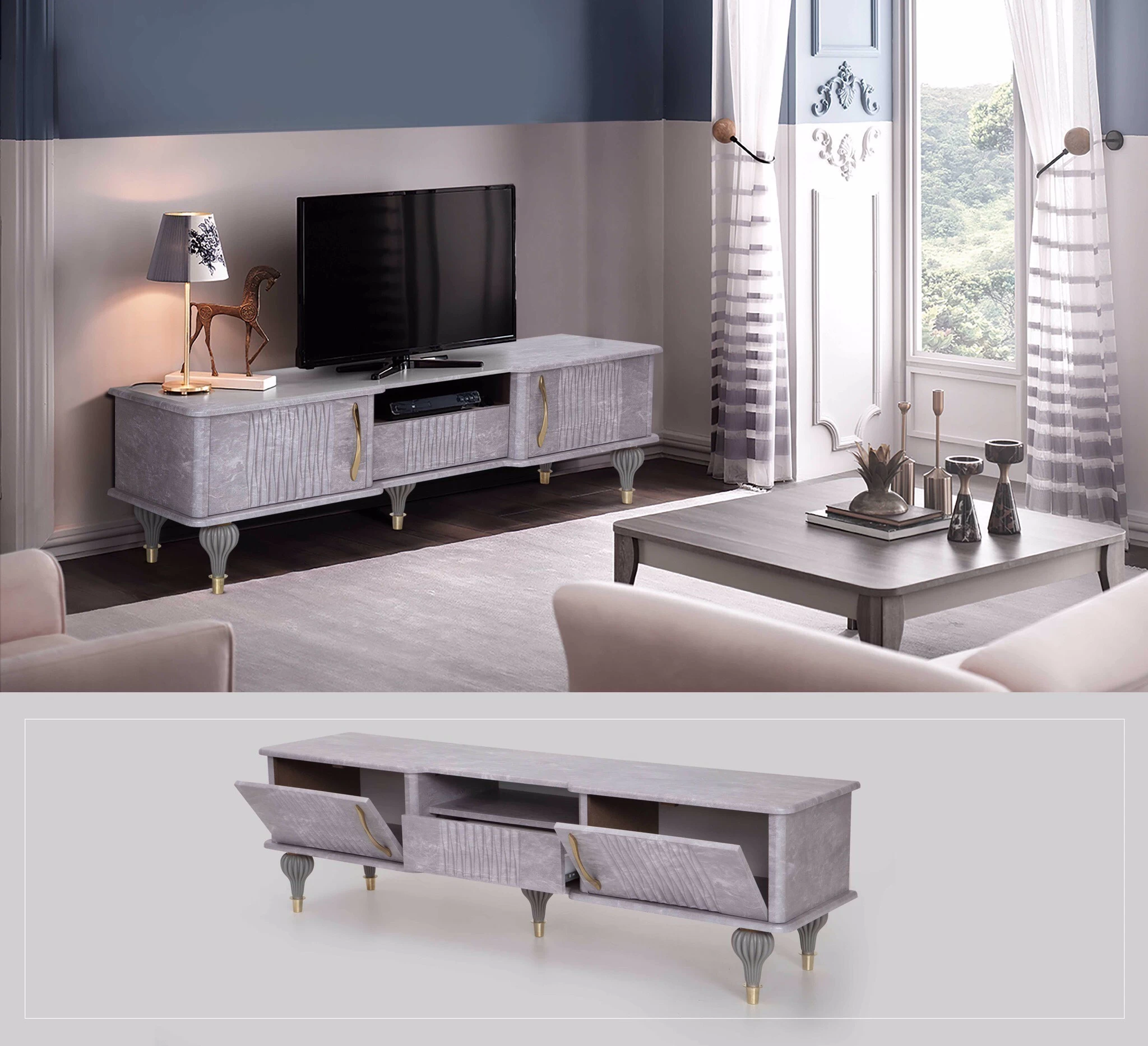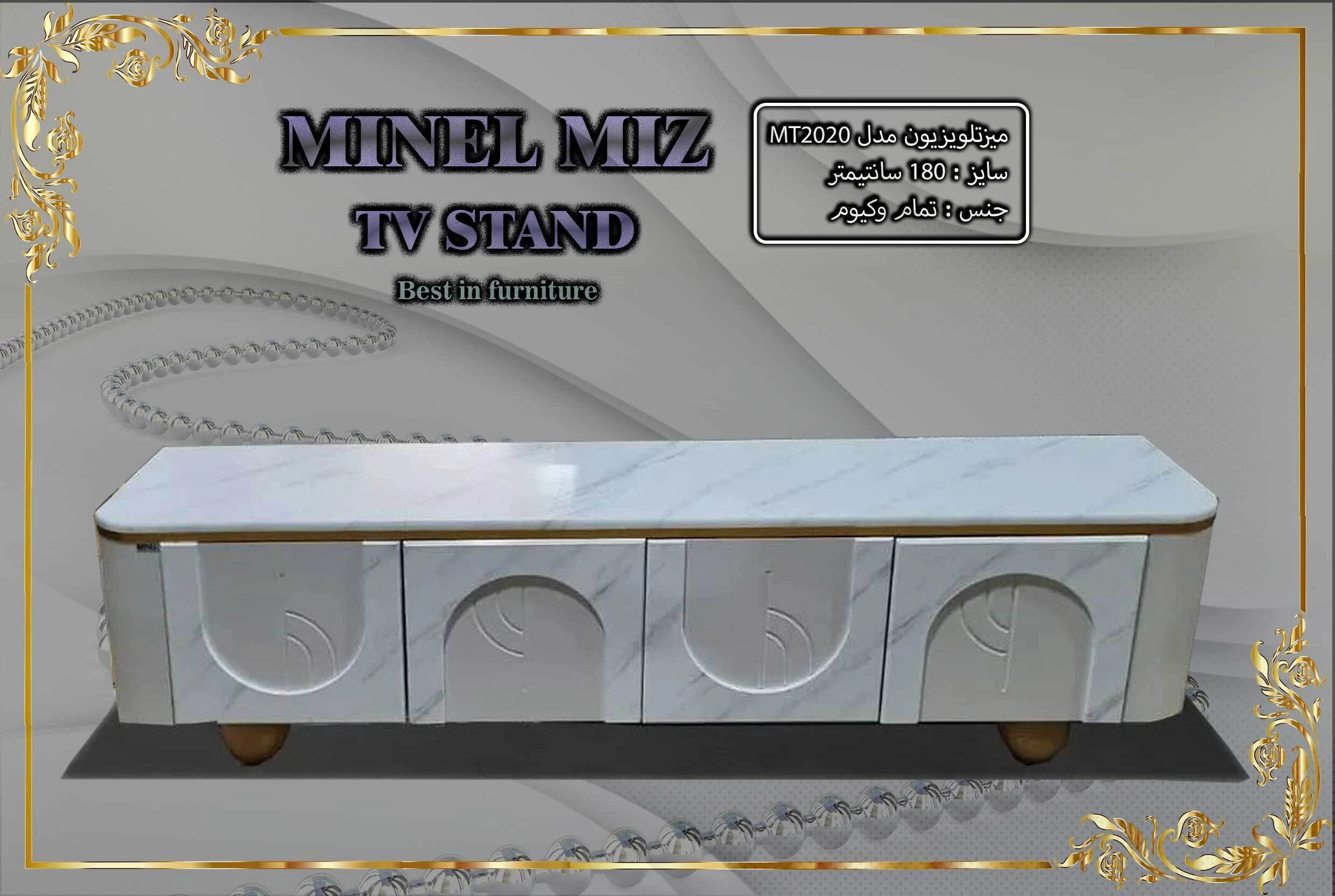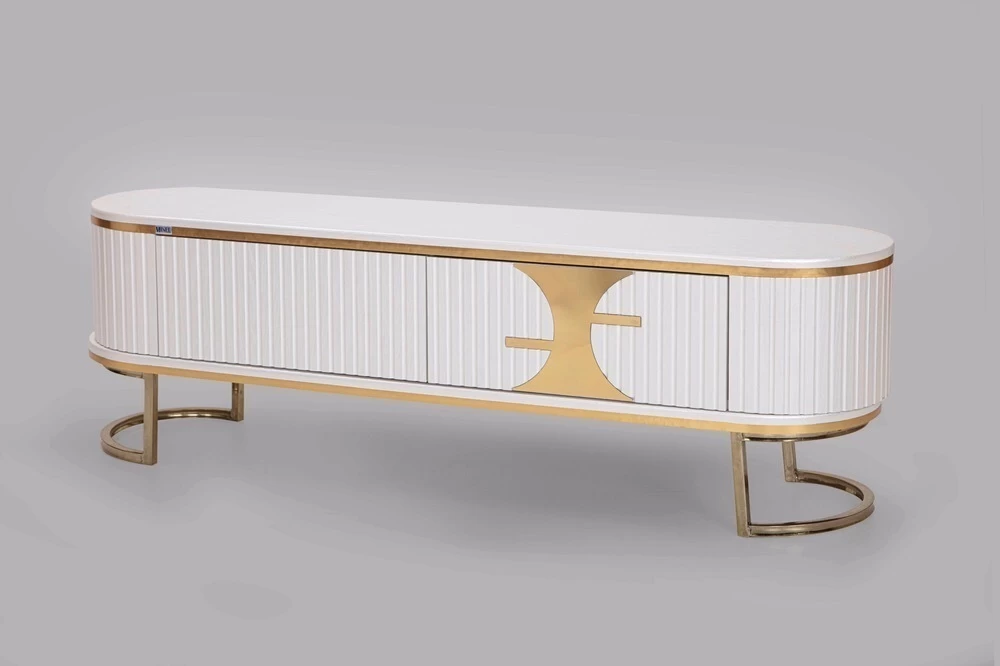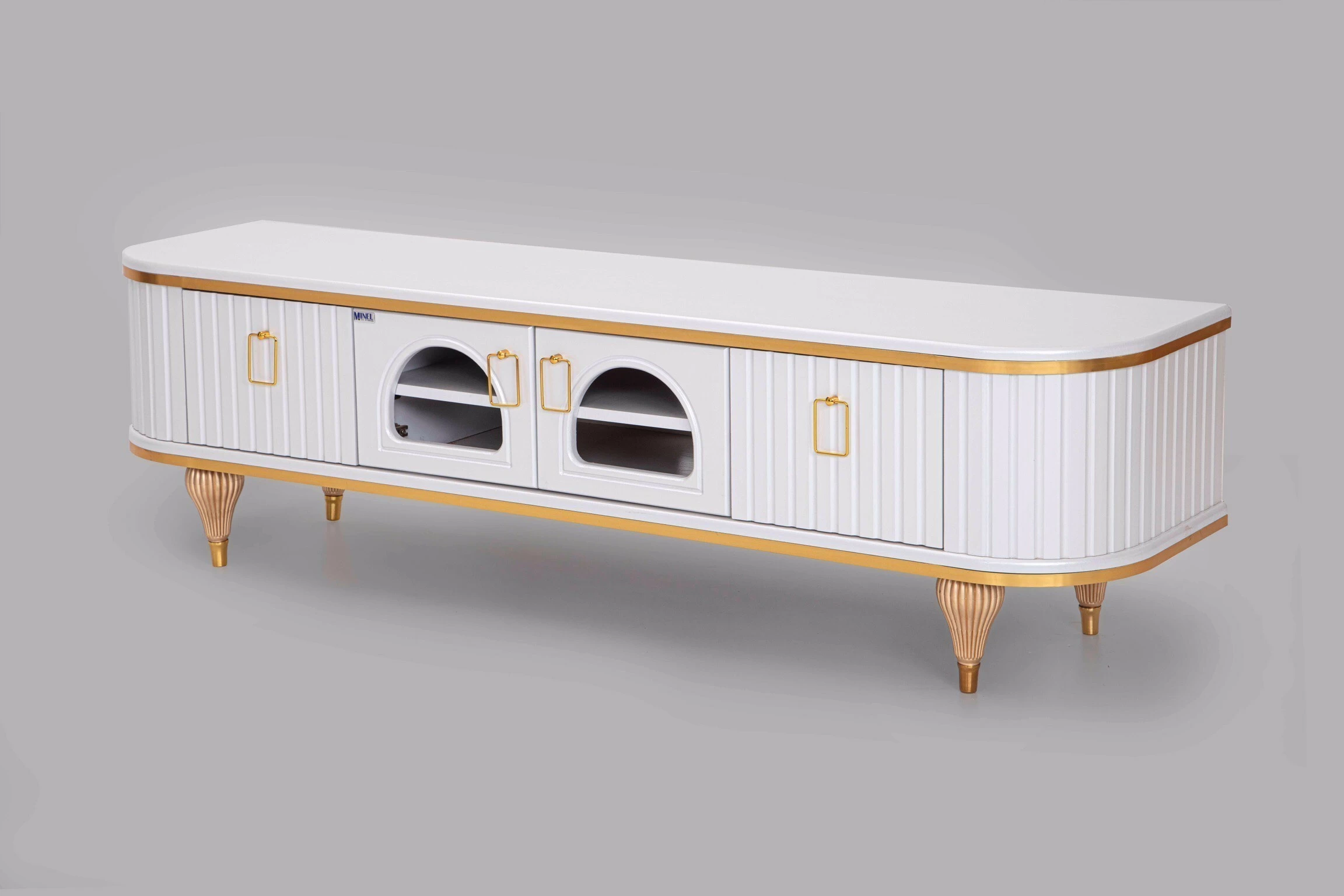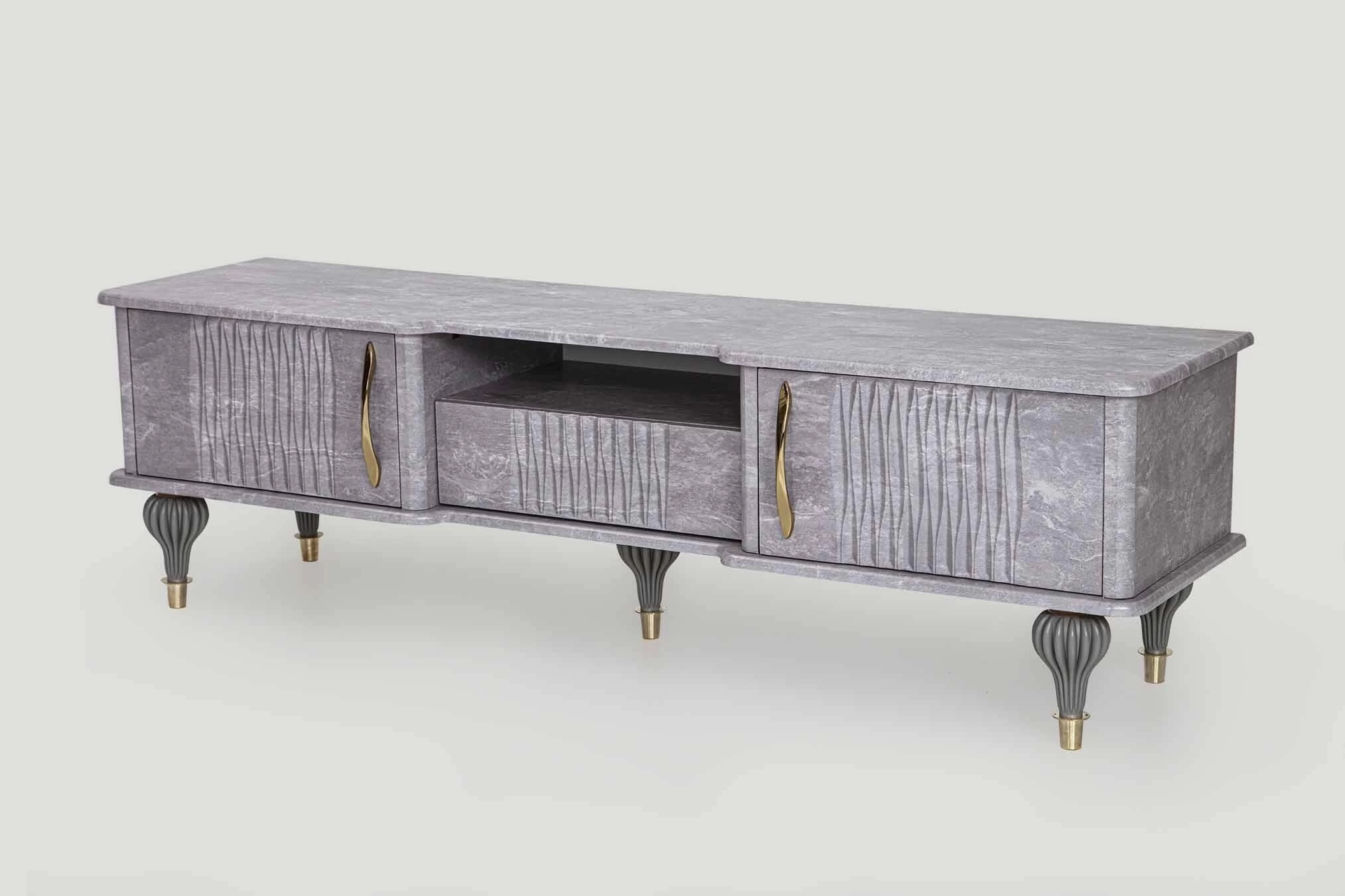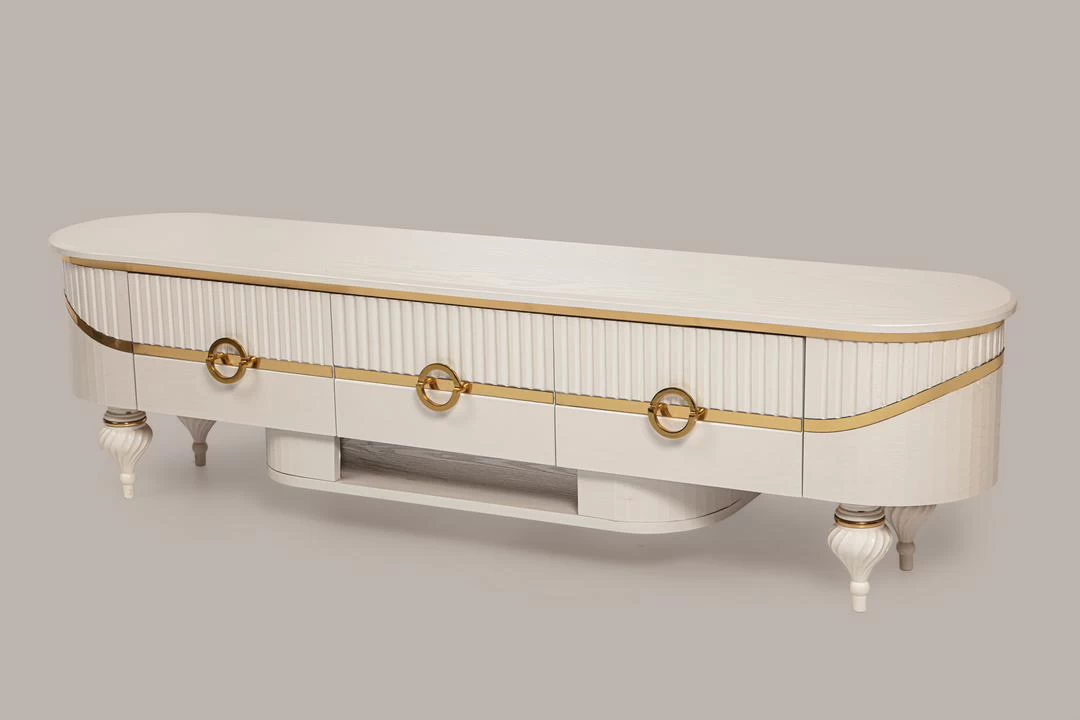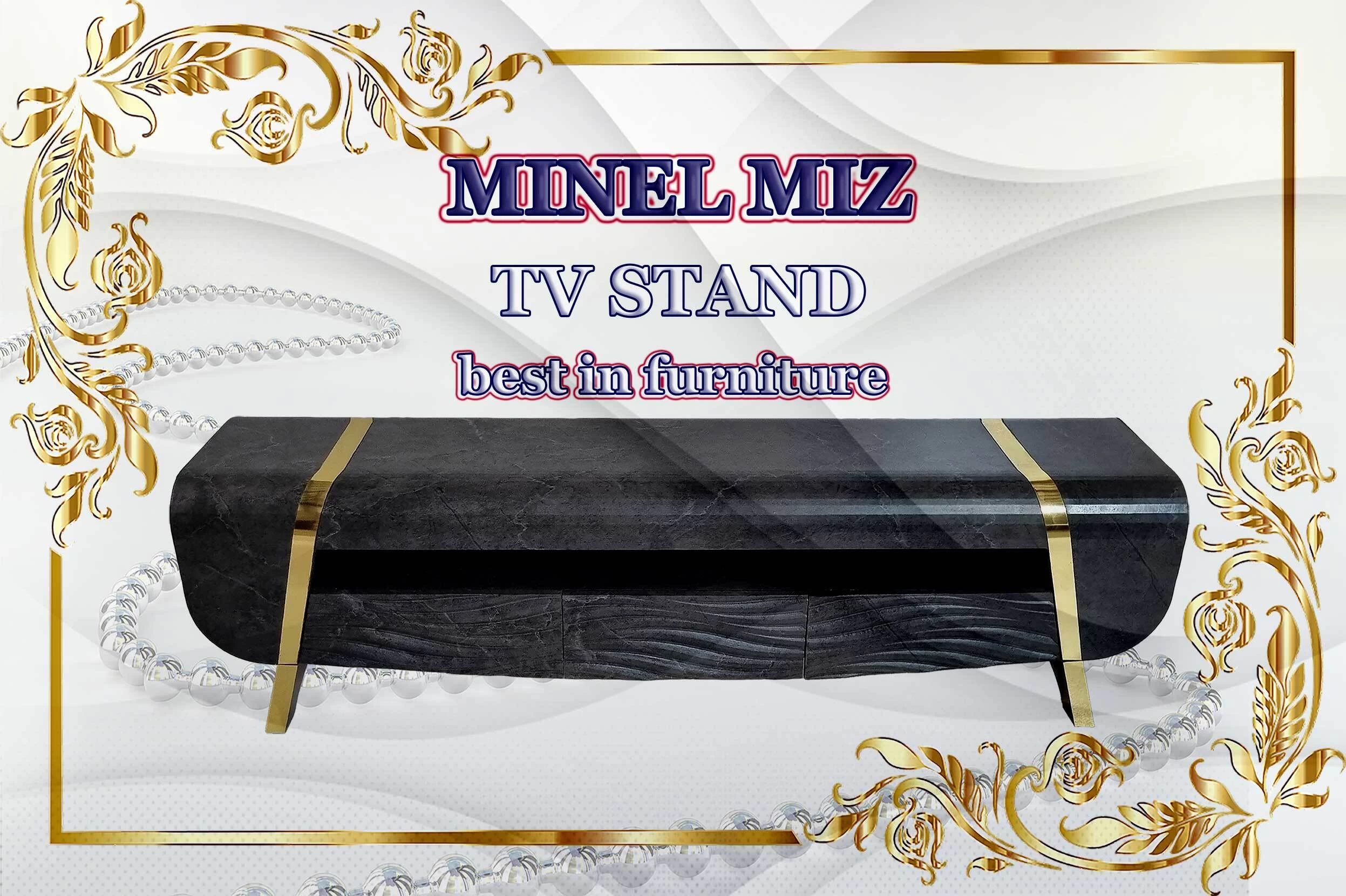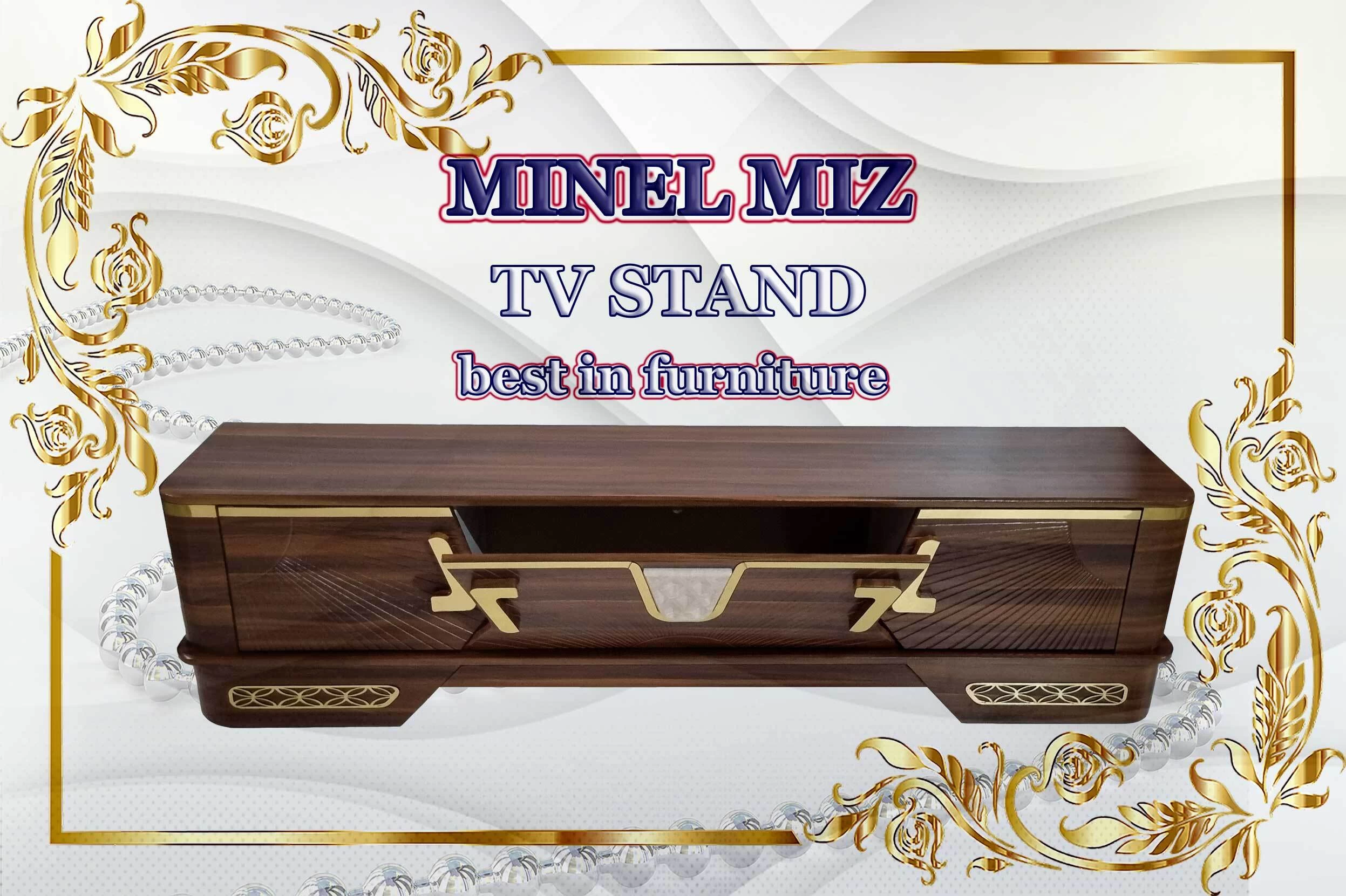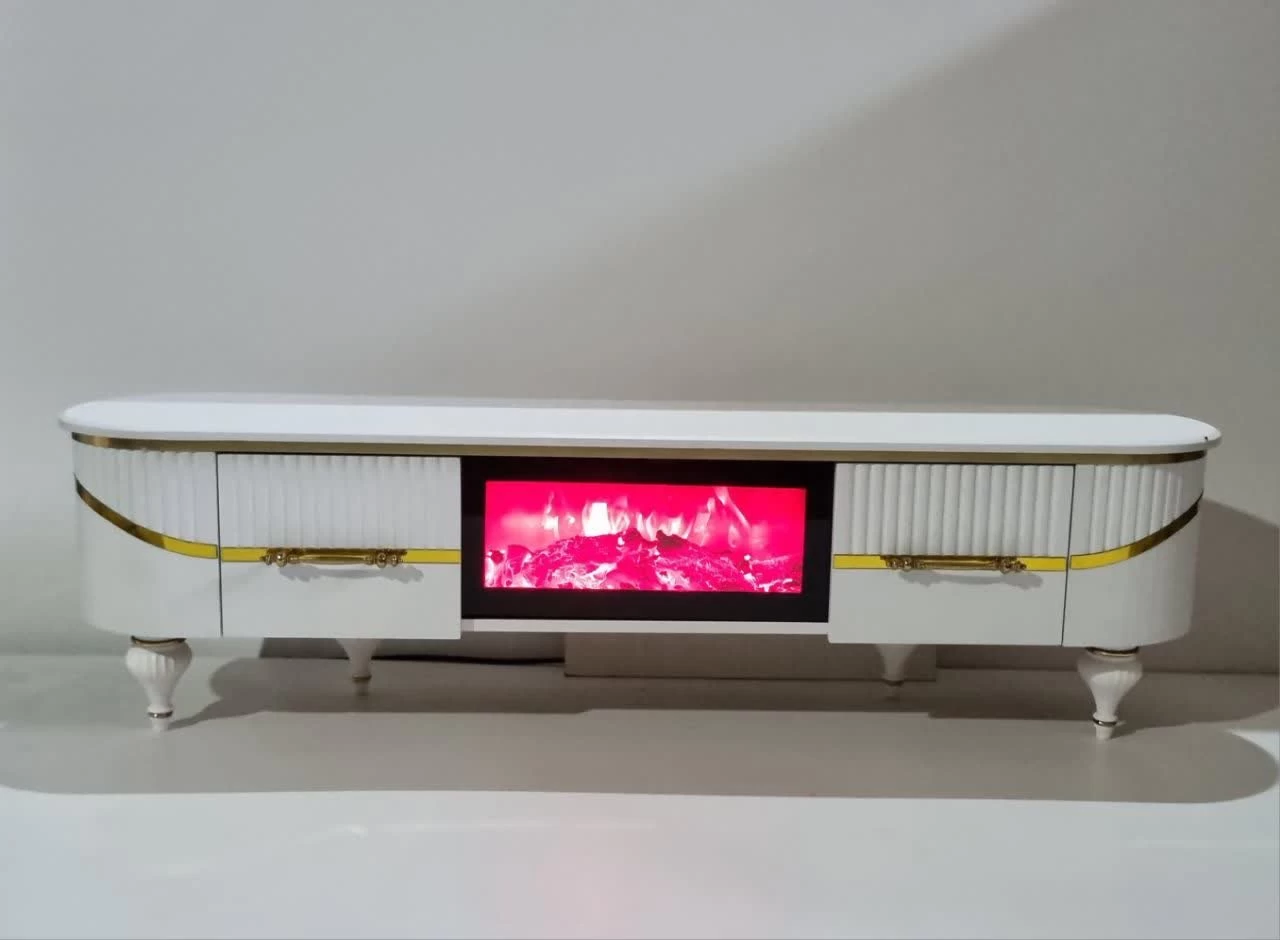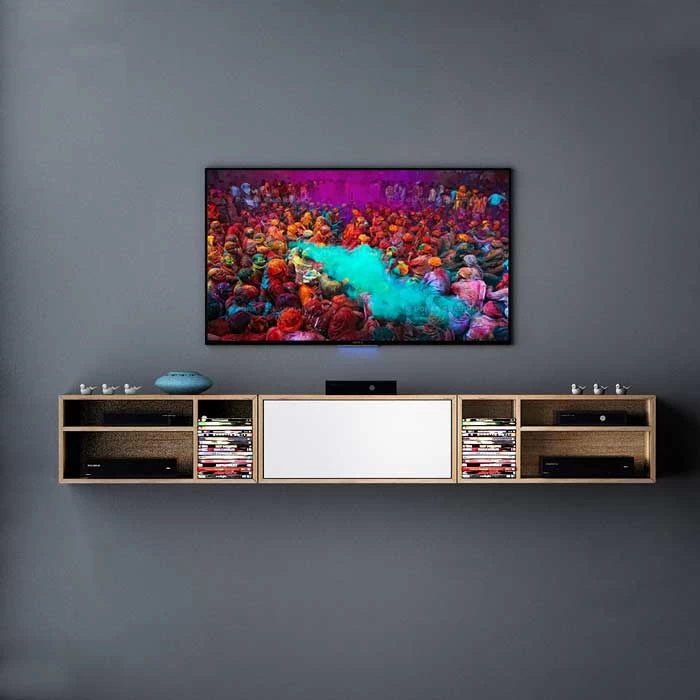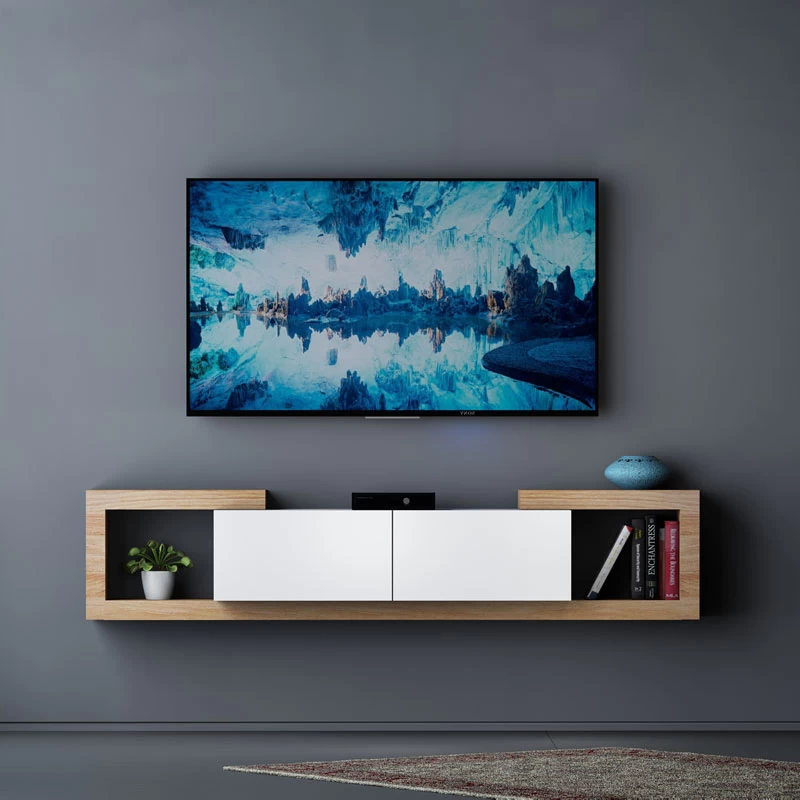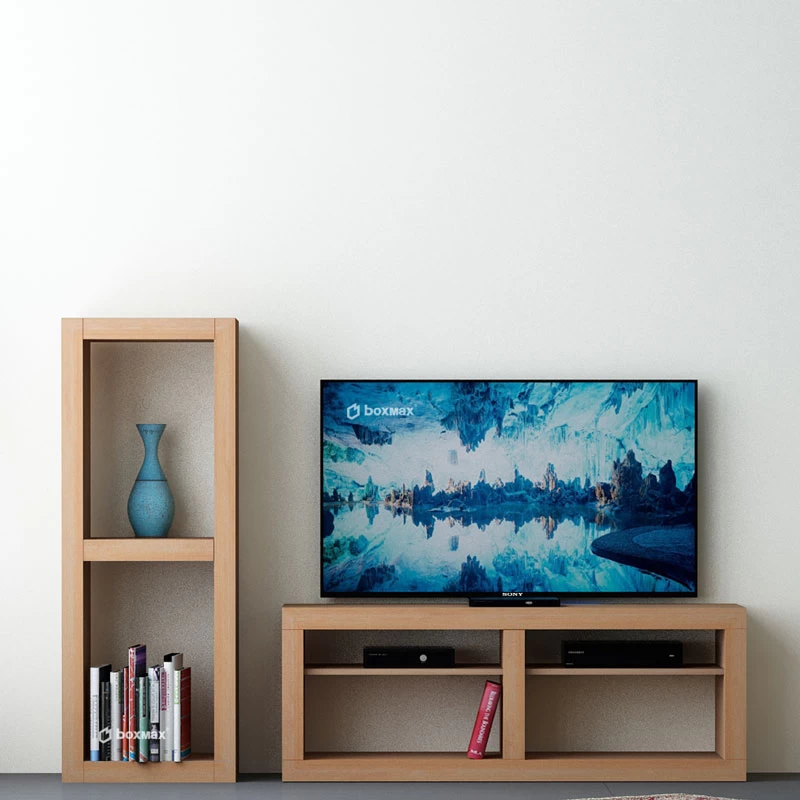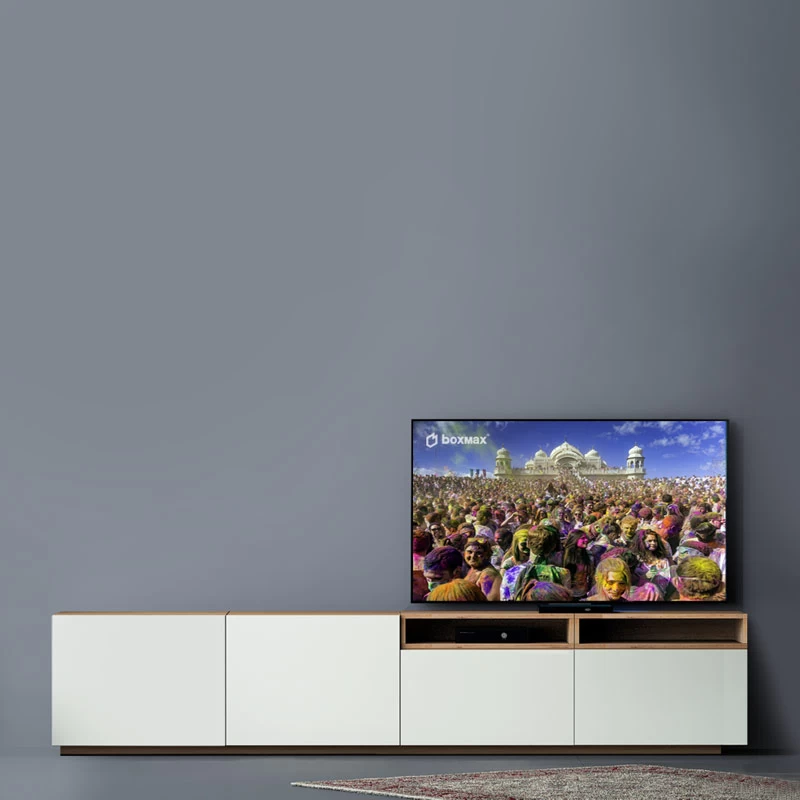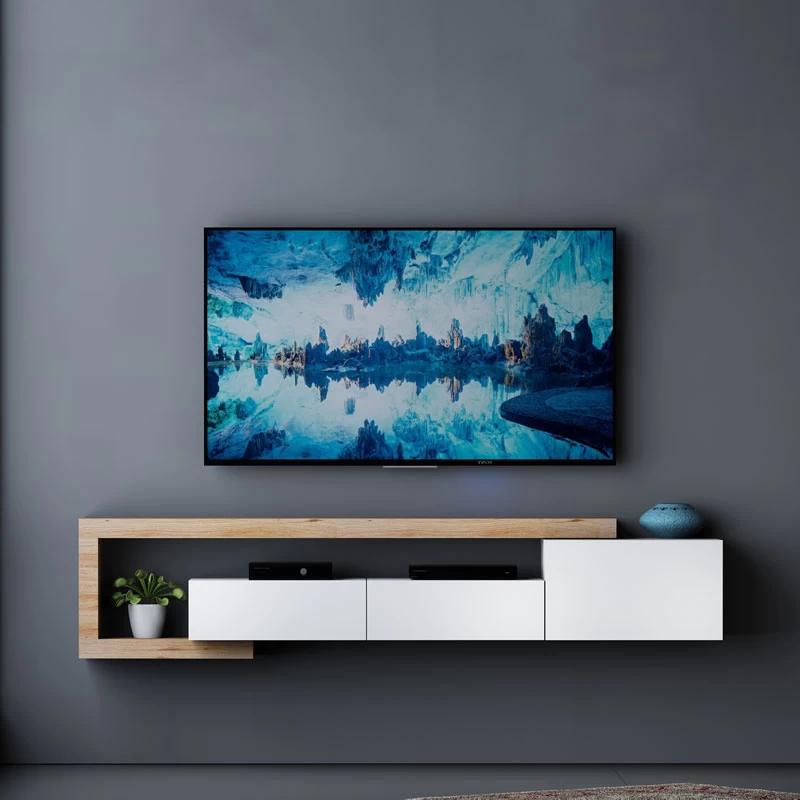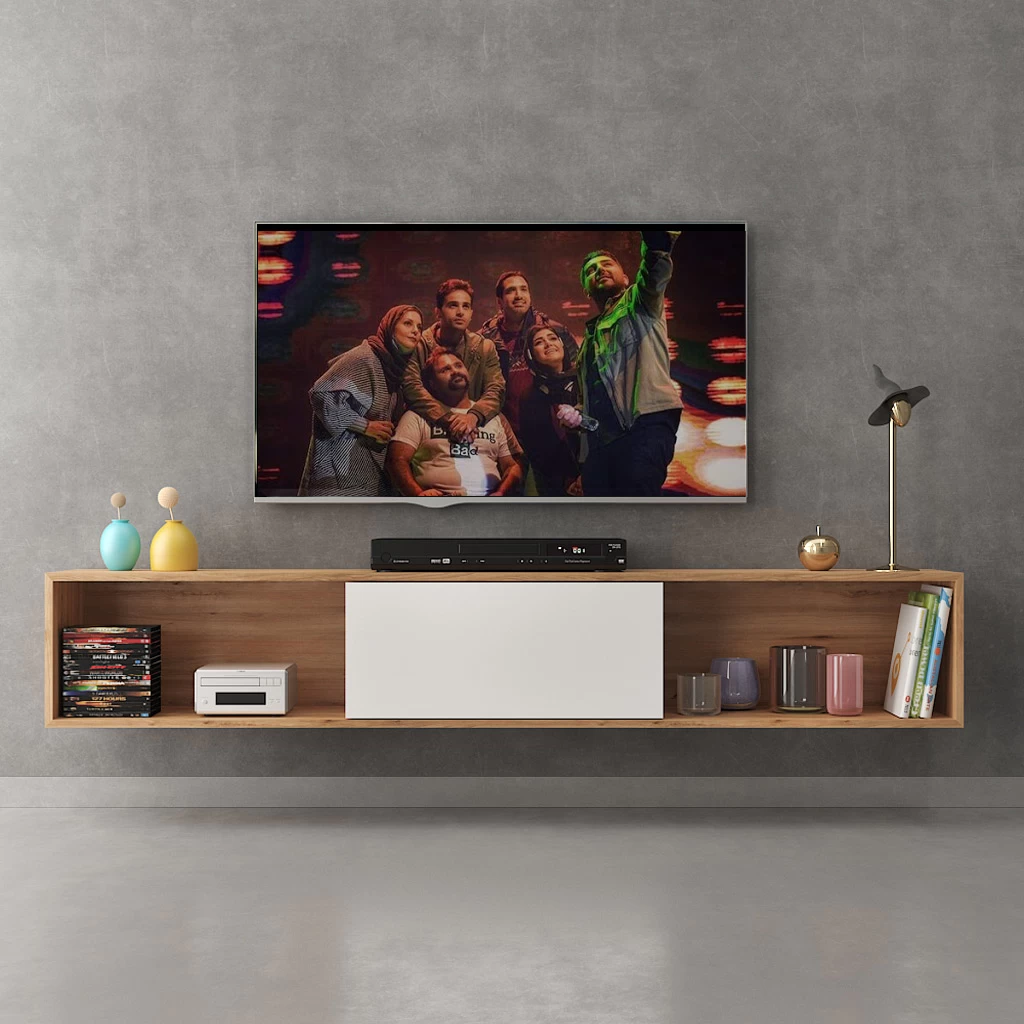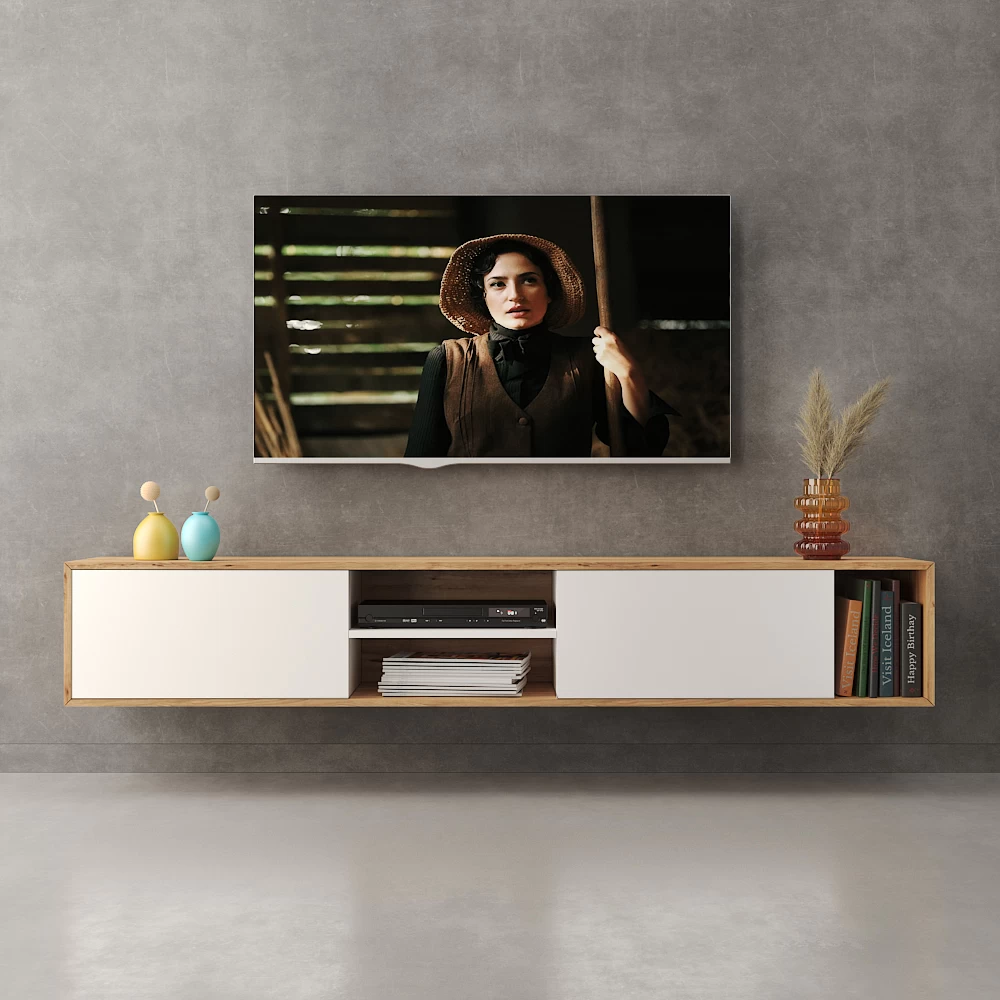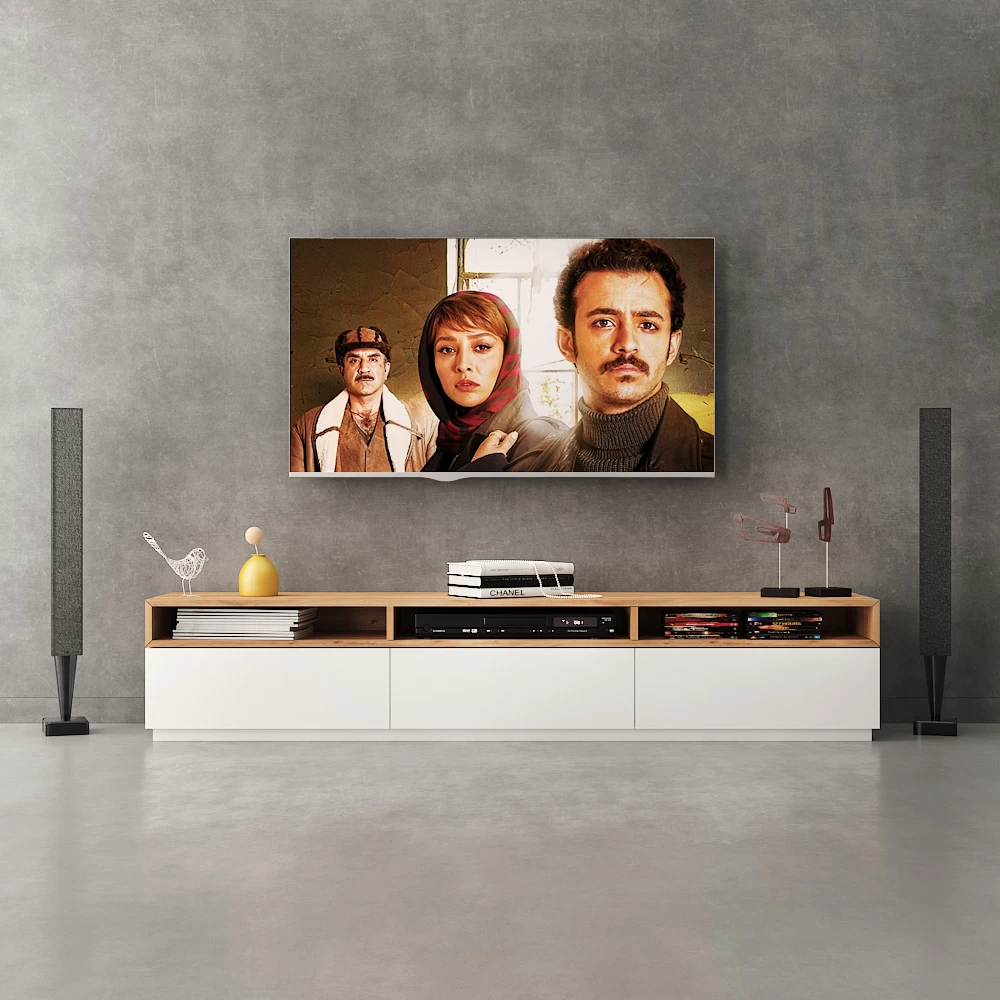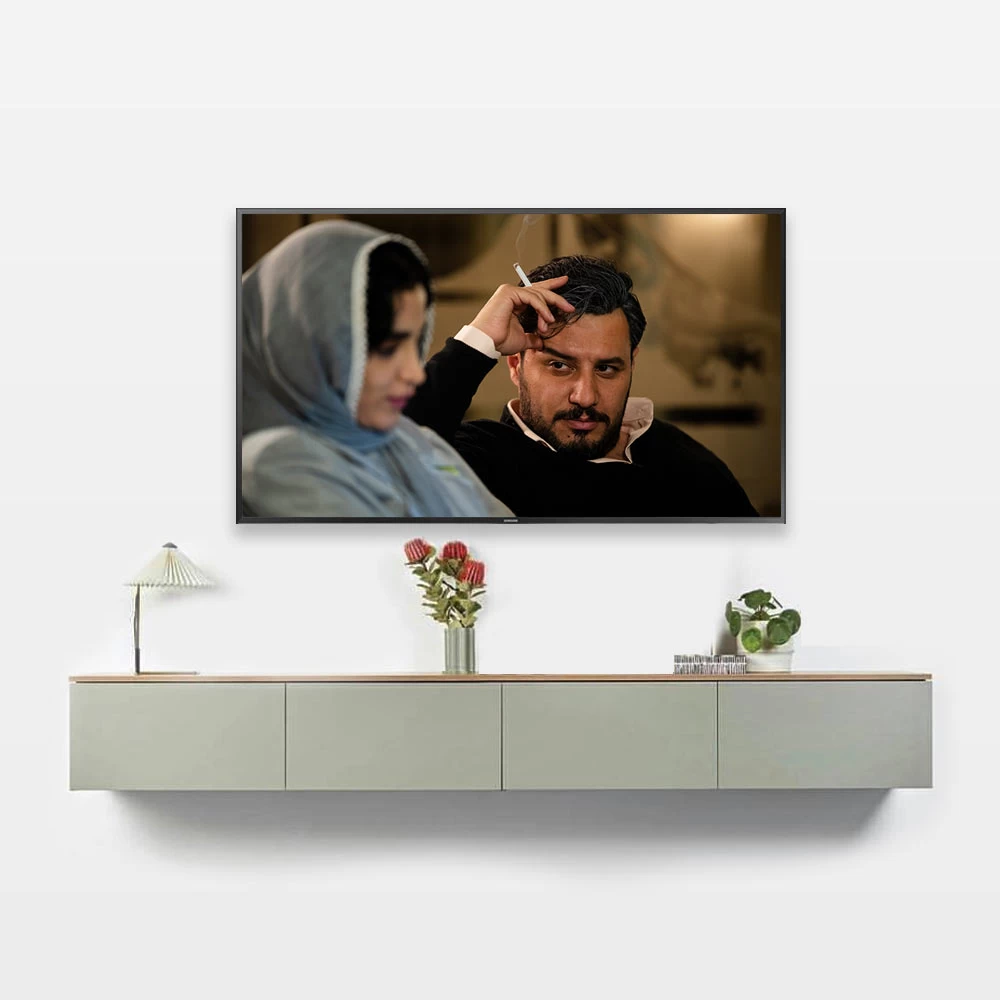TV Stands
TV stands are pieces of furniture designed to hold and support a television. They come in a variety of styles, materials, and sizes to fit different home decor preferences and TV dimensions.
Some common types of TV stands include:
- Console TV stands - These are low, wide stands that provide storage space underneath for cable boxes, gaming consoles, etc. They often have an open or glass-enclosed design.
- TV entertainment centers - Larger, more elaborate setups that combine a TV stand with built-in shelving, drawers, or cabinets for storage and organization of media components.
- TV credenzas - Longer, lower profile TV stands, often with a more sophisticated or vintage-inspired design.
- TV mount stands - Minimalist stands that are designed to hold a TV mounted on the wall, with storage space underneath.
Key features to consider when choosing a TV stand include:
- Size - Stands should be wide enough to accommodate the TV and deep enough to provide stability.
- Material - Common materials include wood, metal, glass, and particle board.
- Storage space - For housing cable boxes, game consoles, media players, etc.
- Cord management - Stands with built-in cable routing help keep cords organized.
- Aesthetic - Styles range from modern to traditional to match your home decor.

Proper TV stand selection can enhance the look of your entertainment space while keeping your TV and components neatly organized. The right stand provides both functional and stylistic benefits.
TV stands are generally considered to be furniture rather than home appliances.
The key differences are:
Furniture:
- Designed primarily for storage, organization, and supporting other items (like a TV)
- Made from materials like wood, metal, glass, etc.
- Intended for long-term use and placement in a room
- Contributes to the overall decor and style of a space
Home Appliances:
- Designed primarily to perform a specific function or task
- Made from more utilitarian materials
- Intended for more temporary or portable use
- Do not directly contribute to the decor of a room
While a TV itself would be considered a home appliance, the stand or cabinet that holds the TV is classified as furniture. TV stands are pieces of furniture that are used to position, support, and sometimes store components related to the TV, but their primary purpose is not the direct functionality of the TV itself.
So in summary, TV stands fall into the category of home furniture rather than home appliances. They are designed to complement and enhance the TV viewing experience within a living space, rather than being the primary tech device itself.
TV stands differ from other types of furniture in a few key ways in terms of their design and purpose:
1. Specific TV Support:
- TV stands are designed with the specific purpose of supporting and positioning a television.
- They often have features like TV mounts, cutouts, or shelves sized for TV dimensions.
- This contrasts with general purpose furniture like tables, dressers, or bookcases that are not built around a TV.
2. Component Storage:
- TV stands commonly include open shelves, cabinets, or drawers to store cable boxes, gaming consoles, media players, and other AV equipment.
- This integrated storage is a key function to organize and conceal the various components needed for a home entertainment setup.
- Other furniture may have storage, but is not necessarily optimized for media components.
3. Cord Management:
- TV stands frequently incorporate features like cable routing channels, wire holes, or built-in power outlets to help hide and organize the many cords associated with a TV and connected devices.
- This cord management is a critical design element for TV stands that is less common in other furniture types.
4. Viewing Orientation:
- The height, depth, and angle of a TV stand is tailored to positioning the TV at an optimal viewing level and distance for the room.
- Other furniture like coffee tables or side tables are not designed with this TV-centric focus.
5. Aesthetic Integration:
- TV stands come in a wide variety of styles, materials, and finishes to complement different home decor preferences.
- Integrating the TV stand seamlessly into the room's design is an important consideration.
- General furniture has more flexibility in aesthetic since it is not tied to a specific electronic device.
So in summary, the specialized support, storage, cord management, viewing orientation, and aesthetic integration around the TV make TV stands distinct from other types of home furniture. Their purpose-built design caters to the unique needs of the home entertainment setup.

here are some examples of different TV stand styles that can suit various home decor themes:
Modern/Minimalist:
- Low-profile TV consoles with clean lines and a streamlined silhouette, often in materials like wood, metal, or glass.
- Mounted TV stands that attach directly to the wall for a floating, space-saving look.
- TV entertainment centers with a linear, symmetrical design and built-in shelving.
Rustic/Farmhouse:
- Reclaimed wood TV stands with a distressed or weathered finish.
- TV consoles with metal accents, barn door-style cabinets, or a whitewashed appearance.
- TV stands made from repurposed vintage or industrial elements.
Traditional/Classic:
- Ornate, wooden TV entertainment centers with detailed moldings and cabinetry.
- TV consoles with a dark, rich wood tone and turned legs in a baroque or queen anne style.
- TV stands with raised panel doors, integrated shelving, and a more formal aesthetic.
Mid-Century Modern:
- Low-slung TV stands with tapered legs and a sleek, angular profile.
- TV entertainment units with exposed wood grains and retro-inspired curved shapes.
- Consoles with integrated drawers and open compartments for a tidy, streamlined look.
Coastal/Beachy:
- Light, airy TV stands in whitewashed wood, rattan, or wicker materials.
- TV consoles with a driftwood or weathered finish to evoke a seaside vibe.
- TV stands with shiplap or beadboard accents for a cottage-style feel.
The style of TV stand you choose can make a big impact on the overall look and feel of your living space. Matching the stand to your existing home decor creates a cohesive, intentional design.
- Material - Common materials include wood, metal, glass, and particle board.
- Storage space - For housing cable boxes, game consoles, media players, etc.
- Cord management - Stands with built-in cable routing help keep cords organized.
- Aesthetic - Styles range from modern to traditional to match your home decor.

- Designed primarily for storage, organization, and supporting other items (like a TV)
- Made from materials like wood, metal, glass, etc.
- Intended for long-term use and placement in a room
- Contributes to the overall decor and style of a space
- Designed primarily to perform a specific function or task
- Made from more utilitarian materials
- Intended for more temporary or portable use
- Do not directly contribute to the decor of a room
- TV stands are designed with the specific purpose of supporting and positioning a television.
- They often have features like TV mounts, cutouts, or shelves sized for TV dimensions.
- This contrasts with general purpose furniture like tables, dressers, or bookcases that are not built around a TV.
- TV stands commonly include open shelves, cabinets, or drawers to store cable boxes, gaming consoles, media players, and other AV equipment.
- This integrated storage is a key function to organize and conceal the various components needed for a home entertainment setup.
- Other furniture may have storage, but is not necessarily optimized for media components.
- TV stands frequently incorporate features like cable routing channels, wire holes, or built-in power outlets to help hide and organize the many cords associated with a TV and connected devices.
- This cord management is a critical design element for TV stands that is less common in other furniture types.
- The height, depth, and angle of a TV stand is tailored to positioning the TV at an optimal viewing level and distance for the room.
- Other furniture like coffee tables or side tables are not designed with this TV-centric focus.
- TV stands come in a wide variety of styles, materials, and finishes to complement different home decor preferences.
- Integrating the TV stand seamlessly into the room's design is an important consideration.
- General furniture has more flexibility in aesthetic since it is not tied to a specific electronic device.

- Low-profile TV consoles with clean lines and a streamlined silhouette, often in materials like wood, metal, or glass.
- Mounted TV stands that attach directly to the wall for a floating, space-saving look.
- TV entertainment centers with a linear, symmetrical design and built-in shelving.
- Reclaimed wood TV stands with a distressed or weathered finish.
- TV consoles with metal accents, barn door-style cabinets, or a whitewashed appearance.
- TV stands made from repurposed vintage or industrial elements.
- Ornate, wooden TV entertainment centers with detailed moldings and cabinetry.
- TV consoles with a dark, rich wood tone and turned legs in a baroque or queen anne style.
- TV stands with raised panel doors, integrated shelving, and a more formal aesthetic.
- Low-slung TV stands with tapered legs and a sleek, angular profile.
- TV entertainment units with exposed wood grains and retro-inspired curved shapes.
- Consoles with integrated drawers and open compartments for a tidy, streamlined look.
- Light, airy TV stands in whitewashed wood, rattan, or wicker materials.
- TV consoles with a driftwood or weathered finish to evoke a seaside vibe.
- TV stands with shiplap or beadboard accents for a cottage-style feel.
FAQs
What are the main types of TV stands?
Common types of TV stands include console stands, entertainment centers, credenzas, and wall-mount stands.
Why is cord management an important feature in TV stands?
Effective cord management in TV stands helps keep wires and cables organized and hidden for a cleaner, more streamlined appearance.
How do TV stands differ from other furniture in terms of design?
TV stands are specifically designed to support and position a television, with features like TV mounts, component storage, and viewing-oriented dimensions.
What materials are TV stands commonly made from?
Popular materials for TV stands include wood, metal, glass, and a combination of these elements.
 +7929688-88-14
+7929688-88-14

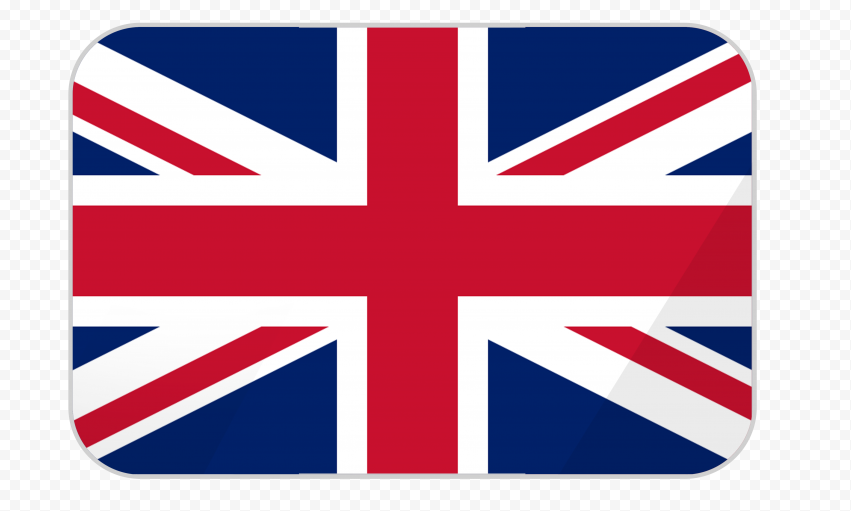 English
English
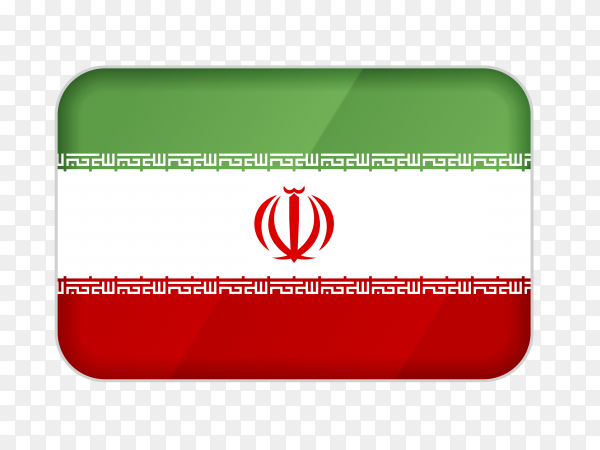 Persian
Persian
 Russian
Russian
 Chinese
Chinese


 +7929688-88-14
+7929688-88-14

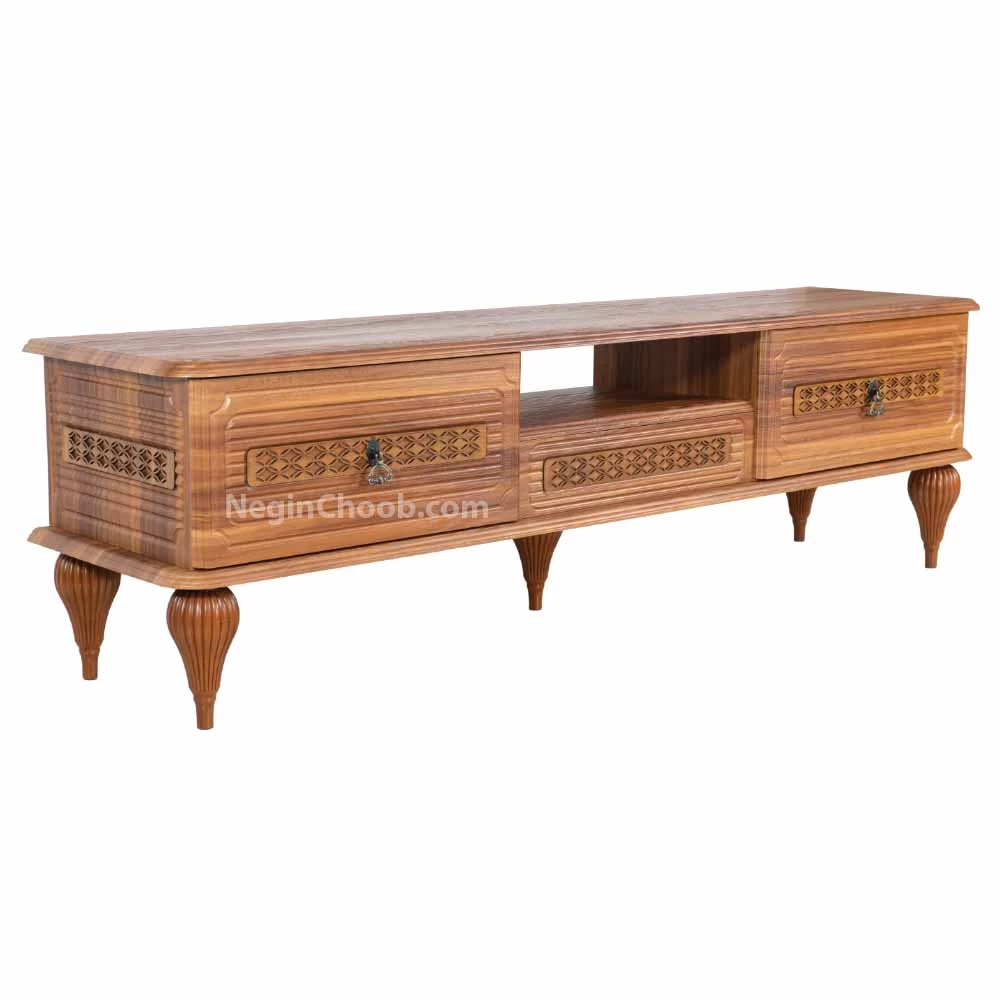

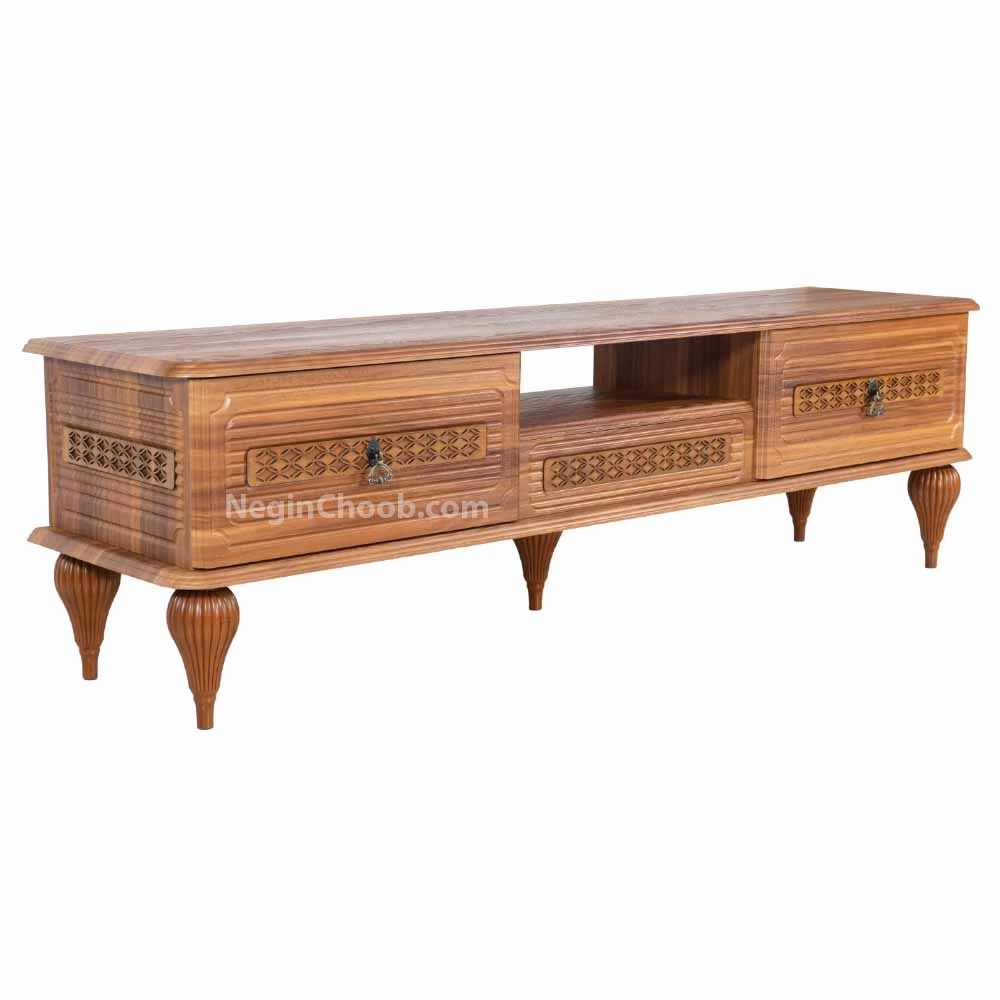
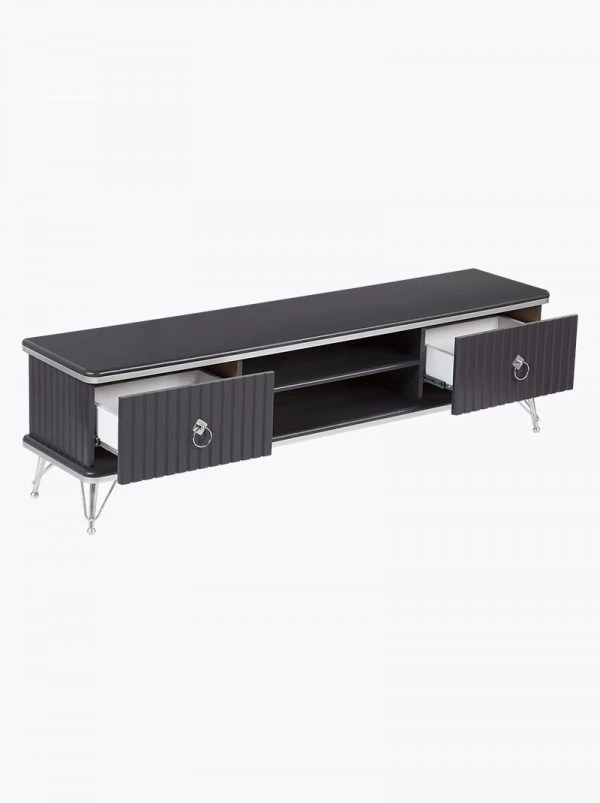
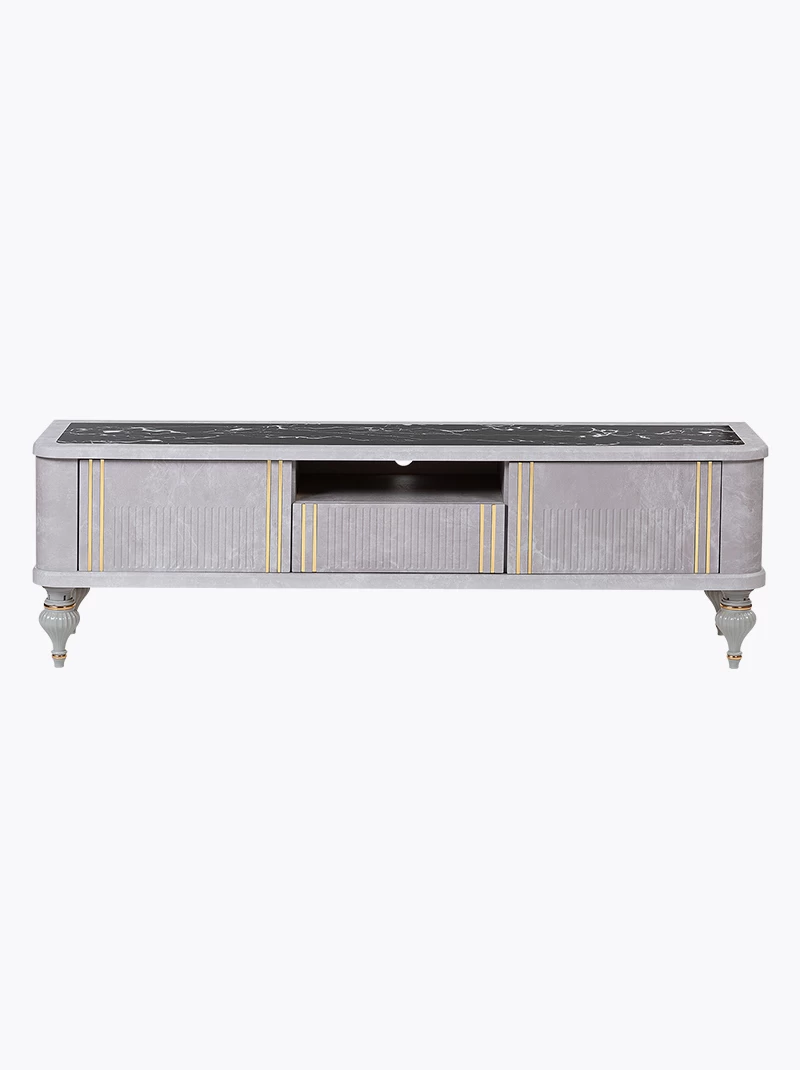
.webp)

